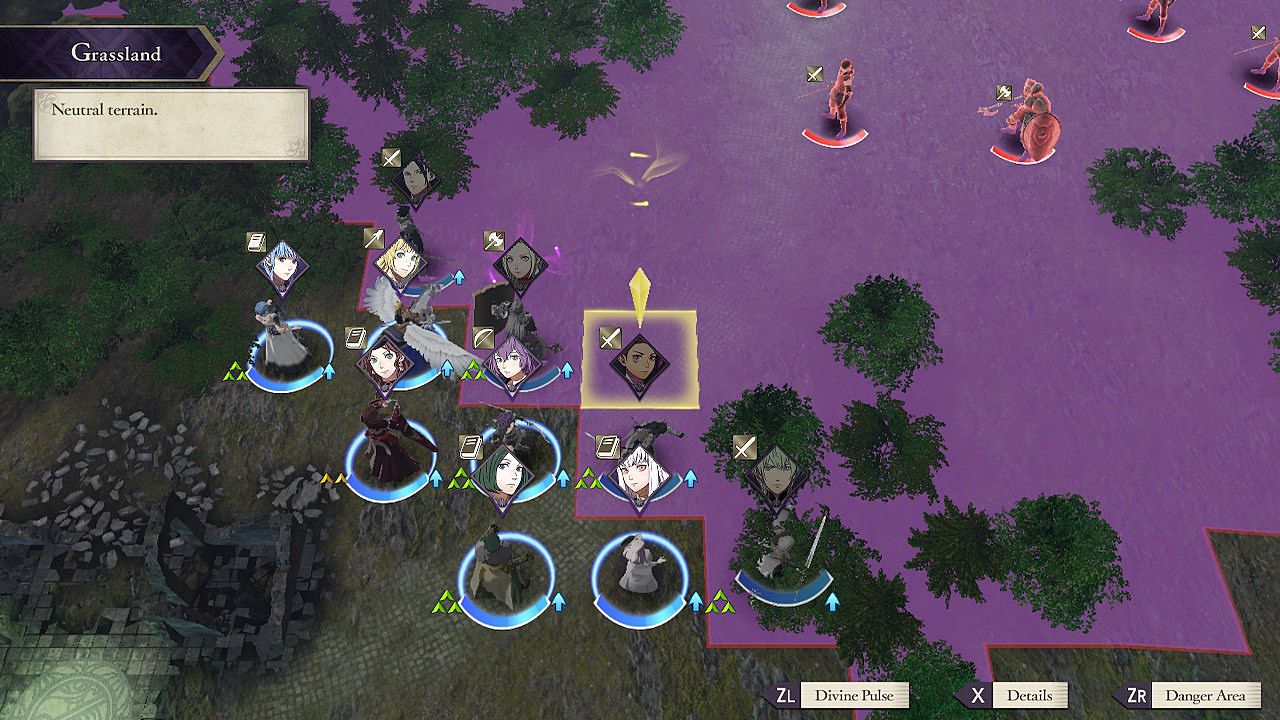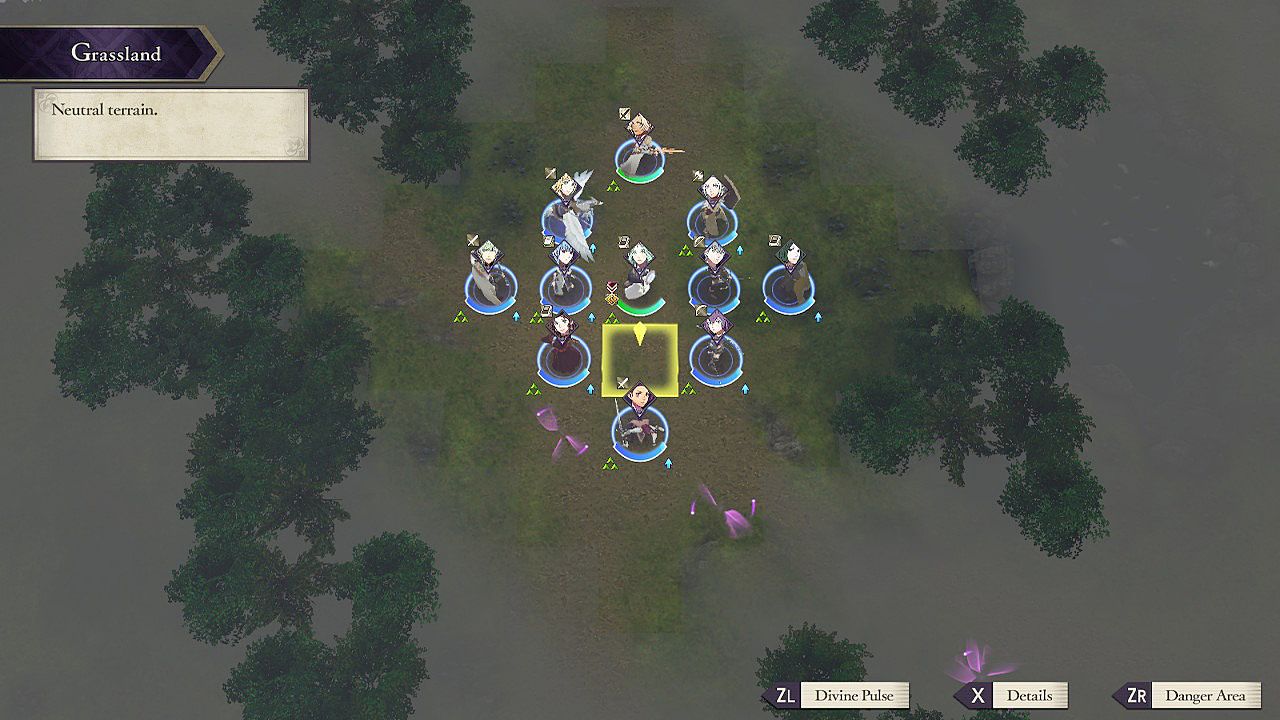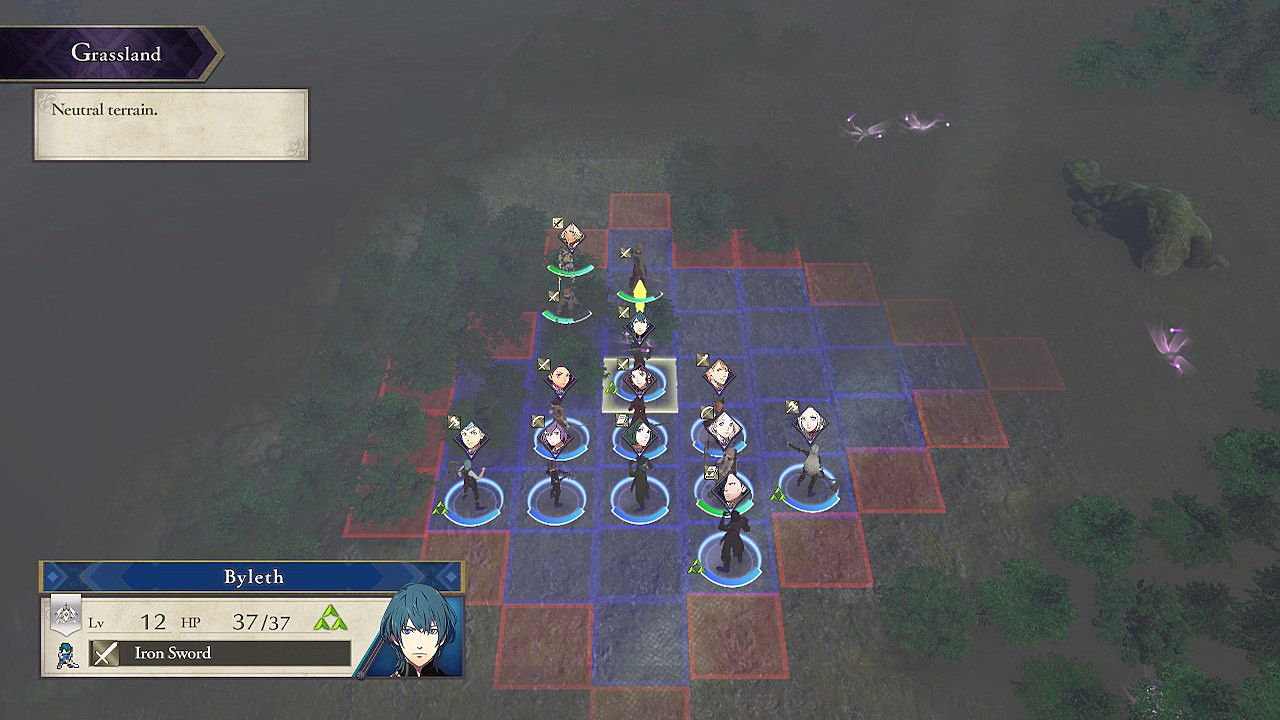Over the years, the Fire Emblem series has earned a reputation for being tough and unforgiving. In older entries especially, mistakes are punished without mercy; one wrong move or stroke of bad luck is often all it takes to see a prized hero fall in battle. The series has softened somewhat since the release of Fire Emblem: Awakening, but one still can’t act too carelessly. Even in Fire Emblem: Three Houses, despite features like the time-bending Divine Pulse, poor strategy still gets valuable units killed easily. Avoiding these deaths is actually not all that difficult a thing to do though; all one has to do is follow a few simple rules.
The Best Offense is a Good Defense
Fire Emblem favors the defender. Not in terms of numbers but instead in opportunities to counter. If a unit is attacked, the player usually will have a chance to heal them on the next turn. Once they’re back up to full strength, that unit can counter-attack and often finish-off their enemy. This isn’t to say that one should never go on the offensive, but staying on the defensive tends to be the most efficient way to dispatch large groups of enemies.
Formations Make All The Difference
Formations exist at the core of most optimal defense strategies. They allow one to take full advantage of mechanics like Links, and they make it that much easier to both dispatch enemies and protect important support units. These formations don’t have to be terribly elaborate or anything, they just need to get the job done. In many cases, a two-layer battle line is usually enough. Put high-level and/or physical units (those wielding swords, axes or lances) in the front line and everyone else in the second or even third line. This will keep the enemy’s attention focused on the units that can handle an attack or two and it will keep support units free to attack at range or heal the front-line members.
Certain maps will make either make forming a line difficult, or even render it grossly ineffective. In these cases, consider using special formations like the Circle or the Wedge. The Circle is perfect for occasions when it’s better for one’s army to just stay put. Keep healers and archers as close to the center as possible, while letting the mages and physical units weather the storm. The Wedge is great for situations where the army must advance, but enemy positions are either spread-out or unknown. Use the physical units to form the “edge” and keep all ranged units inside. Add one or two physical units to the back for added protection from flanking attacks if possible. These can all be modified or scaled-down depending on the needs of battle too, so don’t be afraid to experiment.
Sharing is Caring...And Efficient
More often than not, it’s going to take more than one hit to take down an enemy. Even a guaranteed two-hit kill will usually come at the cost of some health, so it’s better to soften them up at range first. Whenever possible, have a ranged unit attack first and then have a physical unit finish them off. This will cause ranged units to level-up more slowly in the beginning, but that problem will diminish as their weapon proficiency rating increases. Besides, it’s much more preferable to have unit level-up slowly than it is to lose a strong unit outright.
Successful Ops are Based on Intel
Fire Emblem: Three Houses does a fantastic job of communicating important information to the player. It shows enemy attack ranges, their level, their weaponry and their class. All of this should be used to inform the movements of one’s army. Use attack range information to draw enemy fire to a strong unit and to keep vulnerable units out of harm’s way.
Exploit All Advantages to the Fullest
There are plenty of ways for the player to stack the deck to their advantage. Equipping units with stat-buffing accessories makes a huge impact on their chances of survival. “Inferior” iron weapons often allow for two attacks in the same turn and the damage often adds up to more than the single-attacks of “superior” steel weapons. Equipping battalions to every unit comes at basically no cost, gives them a small stat-boost and provides another option in battle; make full use of them. The same goes for adjutants later on; there’s nothing to lose and everything to gain.
Following all these rules won’t guarantee the total survival of every unit in the army; this is still a Fire Emblem game after all, so anything can happen. Adhering to them will minimize the need to use Divine Pulse, however, and that can be invaluable as battles become more difficult. So please, for the sake of your students, please make sure to keep them in mind.
Fire Emblem: Three Houses is available now on Nintendo Switch. Check out our full review for an in-depth look at everything the game has to offer.




